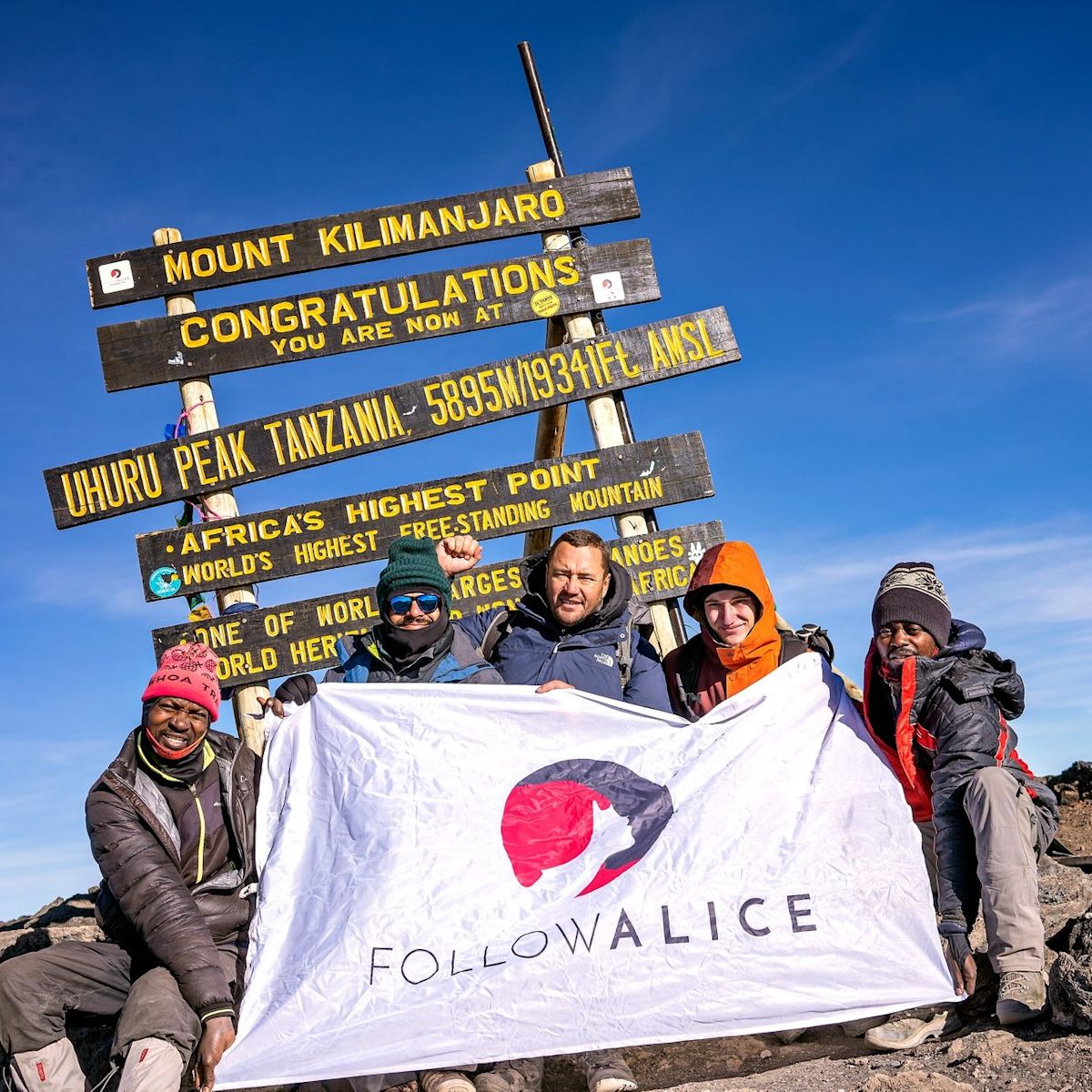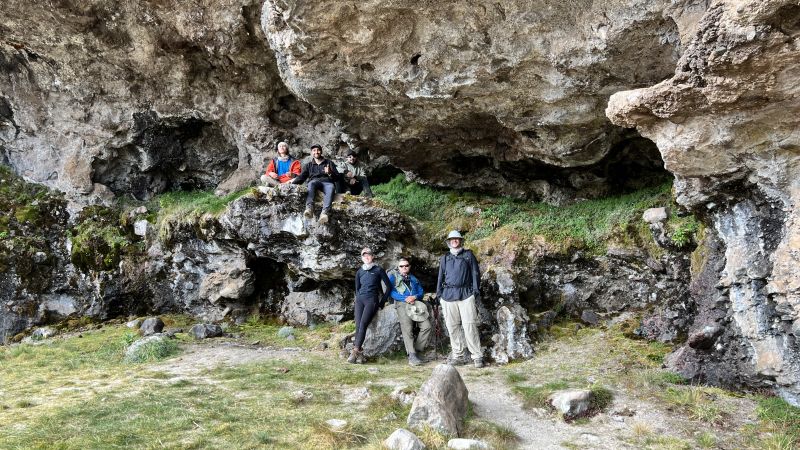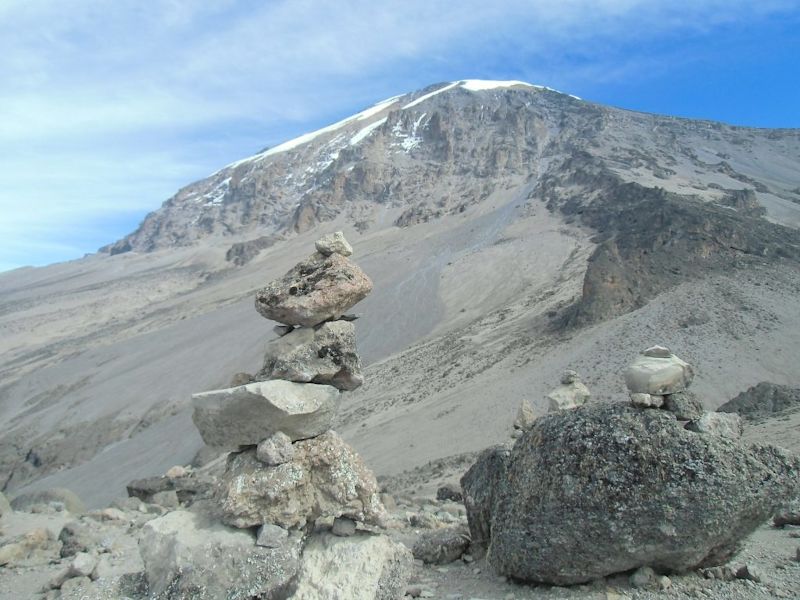If you’ve ever driven or flown to a very high place and then tried to exercise, you’ll remember how you huffed and puffed and felt unable to blow a dandelion over. Our muscles need oxygen to work, and the higher we go, the less oxygen we get per breath.
Well, it shouldn't surprise you then to hear that one of the top two reasons that so many Kilimanjaro trekkers – around 50% – don't make it to the summit is that they try to climb this very high mountain (5,895 m) too quickly and consequently develop altitude sickness.
While mild altitude sickness (known as acute mountain sickness, or AMS) is common and not such a problem, moderate to severe altitude sickness is serious. So the best way to ensure this doesn't happen to you is to acclimatise properly.
What is acclimatisation?
Acclimatisation refers to the body's adapting to reduced oxygen intake associated with a new and high (above 3,000 m) elevation. Proper acclimatisation is when your body adjusts reasonably well. And it can only adjust reasonably well when you increase your elevation bit by bit, and give it ample time to adjust to each new altitude bump.
Obviously with most high-altitude treks, like climbing Kilimanjaro, you don’t have the luxury of taking too much time over the adventure. There are other things to consider like the cost and number of days off work. So it’s about finding that happy balance between not pushing your body to ascend too rapidly into a potentially dangerous altitude and not lingering longer than is necessary before making the next altitude jump.
Remember that Kilimanjaro isn't a race – it's a journey and an adventure!
Is acclimatisation really such a big deal?
Yes. That’s one very big, and very loud, yes.
The goal of every Kilimanjaro trekker is to stand atop Uhuru Peak, the highest point on Kilimanjaro, and shout some more modern, trendier version of “I’m the king of the castle!” over the clouds and plains of Africa.
But Uhuru Peak is 5,895 m above sea level. That’s five or six kilometres higher up into the atmosphere than most of us are used to. We need to ease our bodies into that sort of elevation so that they don’t panic and throw an altitude tantrum, aka altitude sickness.
When we don’t acclimatise properly, we get altitude sickness. This can be mild and pose a level of discomfort at best, or it can be serious and life-threatening. On a Kilimanjaro climb your lead guide is your best friend, as he or she is highly trained in detecting the signs of altitude sickness. (At least, the lead guides of reputable travel operators are well trained in mountain first aid; read more about choosing a quality Kilimanjaro tour operator.)
If your guide decides your condition is dangerously bad, you’ll be escorted off the mountain. No discussions or bargaining. So not only does inadequate acclimatisation pose a danger to your health, and even life, but it also poses a danger to your precious trek. Too many people put in lots of money, training and effort to reach and climb Kilimanjaro, only to have to turn back before the summit because they tried to ascent the mountain too quickly.
Don’t become an acclimatisation victim!
Climbing Kilimanjaro too quickly can be dangerous
Severe altitude sickness can be fatal
Severe altitude sickness can actually prove fatal. Every year people die on Kilimanjaro. This is either because the altitude sickness worsens into a condition like high altitude pulmonary oedema (HAPE) or it triggers a pre-existing medical condition that turns deadly.
That said, please don't be scared off planning a Kilimanjaro climb if that's your dream. If you understand how to acclimatise properly, trek with a reputable tour operator, and also consult your doctor before climbing Kilimanjaro, there's no reason to think you won't have a wonderful, albeit challenging, high-altitude adventure!
How do I ensure I acclimatise properly?
the number one way to ensure you acclimatise properly when climbing Kilimanjaro is to trek a good route. There are seven Kilimanjaro ascent routes, and some offer better acclimatisation than others. Each route can be said to have an 'acclimatisation profile', which refers to how well it lets you acclimatise.
A route has a good acclimatisation profile if it:
- Starts at an altitude well below 3,000 above sea level (asl), which is the elevation at which the body usually starts to feel the strain of the thinner air.
- Incorporates enough days for a slow ascent (seven or eight days is the ideal number for proper acclimatisation).
- Lets you dip down in elevation (by at least a few hundred metres) for a night or two during the ascent phase of your trek, as this helps the body to recuperate.
You therefore want to Kilimanjaro choose a route that offers all three of the above features.
Without doubt the two best routes for proper acclimatisation on Kilimanjaro are the nine-day Northern Circuit and the eight-day Lemosho route. These two routes meet all three criteria outlined above and so offer the the best way to acclimatise well when climbing Kilimanjaro. Please read All Kilimanjaro routes ranked in terms of acclimatisation for a detailed discussion of why these routes outperform all of the other routes.
If you'd like to see our itineraries and prices for these routes, please see Northern Circuit package and Lemosho route package.





